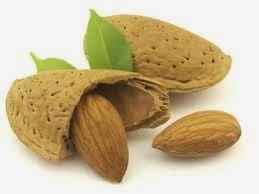Description: The Amêndoa Douro PDO is the fruit of the plant belonging to the Prunus amygdalus L. variety.
Production method: The area where these almonds grow has a very particular micro-climate. The soil is stony, acidic, and low in organic material and water content, especially in the summer time. For the most part these almond trees occur naturally and are not subject to any kind of industrial cultivation. The use of herbicides or any kind of spraying is banned. The nut is still extracted from the shell by hand, in the traditional way. The principle phases of production are the crushing of the shell, the extraction of the nut, grading, selection, skinning and roasting. Lastly they are packed in nets or raffia etc.
Distinctive features: Amêndoa Douro PDO almonds are large and very sweet and grow on naturally occurring almond trees
Production area: Amêndoa Douro PDO almonds grow in the Alto Douro region, particularly in the municipal areas of Alfândega da Fé, Moncorvo, Mogadouro, Freixo, Vila Flor and Vila Nova de Foz Côa, along the river Douro, in Bragança, Guarda and Viseu districts.
History: Amêndoa Douro PDO has very ancient origins dating back to the original almond trees to be found in the Douro region. In the book called Memories of the news from the Municipality of Vila da Torre de Moncorvo (1721) it is said that «this pleasant village has 500 inhabitants (...) and many orchards and good fruit; much olive oil is made (...) almonds and vegetables».
Product specification (pdf)
Producer group
Associação dos Produtores de Amêndoa do Alto Douro
Control and certification body
TRADIÇÃO E QUALIDADE - Assoc. Interprof. Produtos Agro-Alimentares de Trás-os-Montes
Publication in EU official journal
JOCE L299 de 23.11.1996
Regulamento (CE) n.º 1107/96 da Comissão de 12.06.1996 - L 148/ 1
Publication in the Portuguese official journal
Aviso (extrato) n.º 13705/2014 de 09.12.2014
Aviso n.º 7863/2000 de 08.05.2000
Despacho n.º 54/94 de 03.02.1994



